




Uganda's Message of Fear, Fidelity Diluted by Western Remedies; HIV Rate Rising






Uganda's Message of Fear, Fidelity Diluted by Western Remedies; HIV Rate Rising

Uganda's Message of Fear, Fidelity Diluted by Western Remedies; HIV Rate Rising
3-29-2007
Read this and weep:
Washington Post
March 29, 2007
Page A1
By Craig Timberg
Washington Post Foreign Service
KAMPALA, Uganda -- Students packed a grassy field at Makerere University in April 1989 for a farewell concert by singer Philly Lutaaya. This symbol of swaggering virility had grown gaunt, with splotchy skin and the fine, sparse hair of a baby. He sang hauntingly, "Today it's me, tomorrow it's somebody else."
Between songs, he warned the stunned crowd that having several sex partners was a sure way to die in the age of AIDS, echoing pleas also made by political and religious leaders of the time. When Lutaaya died that December, at age 38, the country already had begun its historic reversal of the epidemic, researchers say, because of the power of that single, terrifying message.
Despite this success story, unmatched elsewhere on this AIDS-ridden continent, no country has entirely replicated Uganda's approach. Most instead have followed a diffuse palette of other remedies pushed by Western donors -- condom promotion, abstinence training, HIV testing, drug treatment and stigma reduction -- while forgoing what research shows worked here: fear and a relentless focus on sexual fidelity.
Even in Uganda, these key ingredients have been lost as a new generation coming of age years after Lutaaya's death indulges in the same reckless behavior that first spread the disease so widely.
"We saw him. We saw him die. We abandoned the girlfriends," said Swizen Kyomuhendo, a social scientist at Makerere, who was an undergraduate when Lutaaya spoke there. "When you look at the university students now, they are not as terrified as we were then."
The percentage of sexually active men with multiple partners has more than doubled in recent years, undoing earlier declines, surveys show. Reports of sexually transmitted diseases among women, another indicator of dangerous behavior, have risen sharply as well.
A glimpse of changing attitudes can be seen every Friday night as cars stream onto Makerere's campus and pull into darkened parking lots outside women's dormitories. The glow of cellphones briefly illuminates the drivers, most 10 or 20 years older than the average student, as they call their girlfriends to come out for dates.
Cathy Katumba, 22, a student with a heart-shaped face and long braids looped into a knot at her neck, said many of these college women have on-campus boyfriends their age plus older, often-married ones with the means to provide dinners out and nice clothes. Many young women, Katumba said, arrive with few possessions but finish their studies with refrigerators, DVD players and closets full of the latest fashions.
As for AIDS, she said, most women at Makerere are more worried about getting pregnant. "They don't look at it as a deadly disease now," she said.
Yet even in an era of improved treatment, AIDS remains Uganda's leading killer of adults. The HIV rate has risen again at some urban hospitals. And a 2004 study put the adult infection rate at 7 percent -- several times lower than its estimated peak in the 1990s but higher than estimates just a few years earlier. Ugandans are contracting HIV five times faster than doctors are able to put new patients on the antiretroviral drugs that offer the only hope of long-term survival.
The country's once lean, focused programs, meanwhile, have grown complacent, Ugandans say. Even President Yoweri Museveni, praised for his leadership in early years, "has gotten a bit bored with the AIDS story," said his spokesman, John Nagenda.
"The whole thing is too big now, too heavy," said Sam Okware, a top Ugandan health official who designed early, frightening anti-AIDS campaigns. "It has adapted too much to international guidelines instead of sticking to our own methods, which were very controversial at first but which worked."
'Fear Is Stronger Than Love'
Scientists identified Uganda's first case of AIDS, a mysterious new disease beginning to appear across Africa, in 1982. But a government response in this mostly rural country of 28 million came only after Museveni, a blunt, charismatic rebel leader, ended years of civil war by taking control in 1986.
That year, he sent 60 military officers to train in Cuba. Eighteen tested positive for HIV in routine screenings there, according to Museveni's advisers. At a conference that year in the Zimbabwean capital of Harare, Cuban President Fidel Castro told Museveni, "Hey, brother, you have a problem."
Museveni soon huddled with his top doctors and focused on what they knew: A fatal, incurable, sexually transmitted disease was on the rampage. The only solution, they decided, was to urge Ugandans to stay faithful to one sexual partner or, if in polygamous marriages, to those spouses.
The dominant message was, in Museveni's simple but evocative phrasing, "zero grazing," an agricultural term inspired by the zero-shaped patch created when livestock were tied to a post and allowed to eat only from a single section of grass.
Billboards went up. Songs were sung. The national radio broadcaster, which in that era dominated public airwaves, started each day at 6 a.m. with the rumble of war drums followed by the soft voice of a schoolgirl pleading, "Father, I'm still too young. Please don't die. Be faithful."
AIDS programs of the time had rough edges. In a documentary on Lutaaya chronicling his decline from energetic Afro-pop superstar to a man barely able to walk, he is shown wincing as a group of village women sing sweetly, "AIDS was inflicted upon the rebellious, the promiscuous and the criminals."
While warning against stigmatizing those with the disease, Lutaaya didn't flinch from his core message. "Changes must be made in our sexual behavior," he tells one group shown in the film. "If we don't work hard, the human race is going to die."
This message worked because of the passion of the delivery and the dynamics of HIV, which spreads most easily among networks of men and women with several ongoing sexual relationships, researchers say.
Such arrangements declined sharply in the years after Lutaaya's campaign. The number of Ugandan men reporting three or more non-marital sexual partners fell from 15 percent to 3 percent between 1989 and 1995, according to World Health Organization reports.
The HIV rate in Kampala, once estimated at as high as 30 percent, fell dramatically. Some of that resulted from an estimated 1 million AIDS deaths, but Uganda -- a rarity among African countries -- also experienced a steep and sustained drop in new infections.
"You change because of fear. And you change because of love," said Jesse Kagimba, a longtime AIDS adviser to Museveni. "Fear is stronger than love."
Fewer Casual Sex Partners
During the zero-grazing era, Museveni resisted promoting condoms on the grounds that they offered false hope that the epidemic could be stopped without curbing multiple sexual partnerships.
In 1991, his government banned condom advertising. And at the International AIDS Conference that year in Florence, he told delegates, "We are being told that only a thin piece of rubber stands between our people and the death of the continent, but condoms cannot be the main means of stemming the tide of AIDS."
So rare were condoms in those years that Westerners working in Uganda had trouble getting them for their own programs. A clinic that the University of California at San Francisco had set up to treat sexually transmitted diseases resorted to ordering boxes of them in rainbow colors -- lemon yellow, cherry red, lime green -- that their Ugandan clients found odd, said Nick Hellmann, a doctor who ran the clinic from 1989 to 1991. Few knew how to use them.
"It clearly at the time was not a commonly utilized product," Hellmann said from Seattle, where he is a senior AIDS program official at the Bill & Melinda Gates Foundation.
Museveni gradually relented. The number of condoms delivered and promoted by international groups rose from just 1.5 million in 1992 to nearly 10 million in 1996, most paid for by the U.S. Agency for International Development. Uganda eventually adopted a national plan to distribute condoms whose packages featured pictures of healthy, amorous young couples.
But their role in curbing the epidemic is unclear.
Kampala's decline in new infections began in 1990 and ended by 1994, according to an analysis by U.S. researchers Rand L. Stoneburner and Daniel Low-Beer, meaning the change happened before massive condom imports began. The key factor in this reversal, they concluded based on models of the epidemic and surveys from the time, was the decision by Ugandans to have fewer casual sex partners.
One national survey in 1995 found that more than half of Ugandans said they were sticking to one sexual partner to protect themselves from AIDS. Only 11 percent of men and 2 percent of women said they were using condoms for that reason.
The major push on abstinence began even later, several years after Uganda had its dramatic decline in new infections. And though surveys have shown a gradual decrease in the age when youths here begin having sex, the connection to infection rates remains unproved. A 2005 journal article by national health officials here reported that among adult Ugandans, those who started having sex at 16 are no more likely to have HIV than those who started at 19.
Despite the uncertain science behind both condom promotion and abstinence training, AIDS activists worldwide hotly debated them after President Bush created his $15 billion anti-AIDS program in 2003. The program endorsed a prevention strategy called "ABC," for "Abstain, Be Faithful and Condomize," with $1 billion set aside for abstinence programs alone.
In the international debate that followed, conservatives rallied for abstinence, liberals for condoms. Each side bashed the other's strategy. And attention to the one element that clearly worked -- fidelity -- dwindled, even in Uganda.
Fueling confusion were the dynamics of AIDS itself. A decade often separates the date of HIV infection and death. So Ugandan health officials did not know they had made great strides against the epidemic until recently, when researchers identified those early years of zero grazing as decisive.
By then, the initiative had been overtaken by big-budget, bureaucratic programs that resembled those in most African countries. Persuading Ugandans to stay faithful to their partners was no longer the focus.
"It was a mistake," Okware said. "That message was loud and clear."
Nearly 18 years after Lutaaya's dramatic crusade, billboards warning against the dangers of reckless sex are hard to find in today's Kampala, the graceful, hilly capital. Far more common are photocopied fliers brazenly saying "Get a Lover" and listing a cellphone number.
Using Condoms Sporadically
As Uganda's AIDS programs lost their focus, Raymond Kwesiga, a quietly charismatic altar boy with gentle eyes behind gold-rimmed glasses, contracted HIV.
It wasn't for lack of available condoms or familiarity with abstinence messages. Ugandan high school students receive AIDS education focused heavily on abstinence. And in a 2004 survey, 92 percent of young, urban Ugandan men said they knew where to find condoms.
What gave Kwesiga HIV, he said, was the behavior Lutaaya once warned against.
Kwesiga, 24, had a girlfriend, several occasional partners and a knack for seducing others so reliable that his friends dubbed him "Raymond the Great," he said. Many nights, too lazy to call a girlfriend after downing a bottle of Uganda's bitter national liquor, Waragi, he spent 75 cents to hire a prostitute.
Sometimes he used condoms, sometimes not -- a common but uneven approach that research shows almost entirely undermines their value.
"I was enjoying my life, and I thought I wouldn't get the virus," Kwesiga said, speaking with the deliberate cadence of one trying to live up to newly learned ideals. "I wasn't very scared. . . . During the night, you don't get scared."
Now many of Kwesiga's nights are filled with fear. He fears dying. He fears he may not be able to marry or have children. And with the painful clarity that has come with sobriety, he fears he may have given HIV to somebody else.
With his voice filled with regret, Kwesiga said darkly, "I'm like a murderer."
Bill Weintraub:
Uganda had a successful program.
It was homegrown.
It was based on Fidelity and Fear.
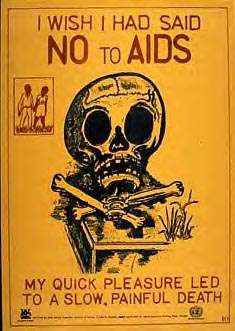
It worked.
HIV prevalence dropped.
The incidence of new infections plummeted.
Western ideologues, unmoved and uncaring, intervened.
Those from the secularist left pushed condoms.
Those from the religious right pushed abstinence.
And now the HIV rate is going back up.
The article doesn't talk about -- who knows why? -- Dr Edward C Green of Harvard, who attempted to tell the world about the successes in Uganda, and was pilloried and vilified for so doing.
You will, dear reader, forgive me I hope if I identify just a tad with Dr Green.
Having myself been vilified and pilloried -- and sued by the way -- simply for speaking the truth.
The Post reporter, Mr Timberg, notes:
During the zero-grazing era, Museveni resisted promoting condoms on the grounds that they offered false hope that the epidemic could be stopped without curbing multiple sexual partnerships.
Can we apply Museveni's wisdom to gay and other men who have sex with men?
Yes.
Condoms offer "false hope" that the epidemic can be stopped without curbing --
in the case of sub Saharan Africa, networks of multiple sexual partnerships;
in the case of gay men, anal penetration.
So: condoms and THOSE WHO PROMOTE THEM offer gay men FALSE HOPE that the epidemic can be stopped without curbing anal penetration.
This epidemic, and all other epidemics of anally-vectored diseases, such as anal HPV which causes anal cancer, CANNOT BE STOPPED WITHOUT CURBING ANAL PENETRATION.
Why not?
Because, as the article notes of a young man named Raymond Kwesiga,
Sometimes he used condoms, sometimes not -- a common but uneven approach that research shows almost entirely undermines their value.
INCONSISTENT AND INCORRECT USE OF CONDOMS, "research shows, almost entirely UNDERMINES THEIR VALUE."
To inconsistent and incorrect use I would add, as would Dr Green, DISINHIBITION.
Condoms encourage men -- whether they are African or American, whether they identify as "straight" or "gay" -- to have more sex with more partners, to be less particular about their partners, and to have riskier sex.
Which in the case of gay men means ANAL.
Inconsistent use + incorrect use + breakage and slippage + disinhibition = HIV infection.
CONDOMS ARE A USELESS INTERVENTION.
Which is why, having lost 500,000 American gay and bi men between 1981 and 1995, we now have MORE THAN 500,000 gay and bi men infected with HIV and living in America today.
Condoms don't work.
You have to wonder what it would take to convince the gay establishment of that fact.
And the answer is:
NOTHING.
It is not possible to convince the gay leadership to give up condoms, because that would mean giving up anal and promiscuity, which the gay establishment has made CORE to gay male life.
Yet the Dutch demonstrated -- from 1984 to 1991 -- that non-anal alternatives work.
So: In Uganda, the religious right and the secularist left put promotion of their agendas ahead of the lives of Africans.
And Africans died.
In America, the analists -- the gay establishment -- put protecting and supporting anal penetration and promiscuity ahead of saving gay male lives.
And gay men died.
Now, of course, gay men aren't dying of HIV -- not in appreciable numbers -- but huge numbers of gay men are getting infected with HIV.
And with anal HPV.
Which causes anal cancer.
We don't know what impact anal cancer will have on the gay male community.
Nor do we really know what impact all that HIV infection will have on the community.
Other than the obvious:
Which is to make the community, and the lives of the men condemned by heterosexualization to live in that community, even more dysphoric and dysfunctional than they already are.
Like NW says, "Why DO so many 'gay guys' have to see a shrink on a regular basis? Not to mention poppers, drugs, drinking/gay bars."
Poppers, drugs, drinking, shrinks.
NW asks Why? and it's a good question.
I know the answer:
Look:
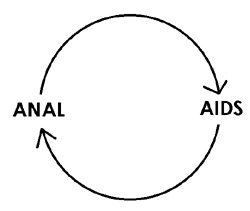
Look:
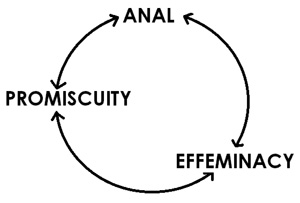
That's how it works.
We could set up the opposite feedback loop:

But of course NO ONE's interested in doing that.
So I guess it won't happen.
At the end of Mr Timberg's excellent article, Raymond Kwesiga says, "I'm like a murderer."
Larry Kramer's said that too.
Strange isn't it?
Some forms of murder are forbidden.
While others seem to be perfectly okay.
Are you a murderer?
If you see people engaging in murderous behavior, and you don't intervene -- you're complicit.
Oh yes.
You are.
I've asked you time and again to donate so that we can fight the lies which are facilitating the murder of gay and bi men.
You won't do it.
Yet I've put the evidence before you, and it couldn't be more plain.
In my experience, most people won't do anything about murder until the murder arrives at their own front door.
You'd best hope that when -- not if, but when -- that happens, you're not so weakened by your years of indulgence and indifference that you're unable to respond.
Bill Weintraub

© All material Copyright 2007 by Bill Weintraub. All rights reserved.

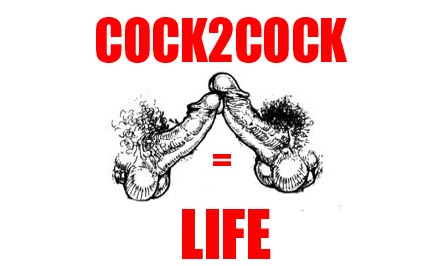
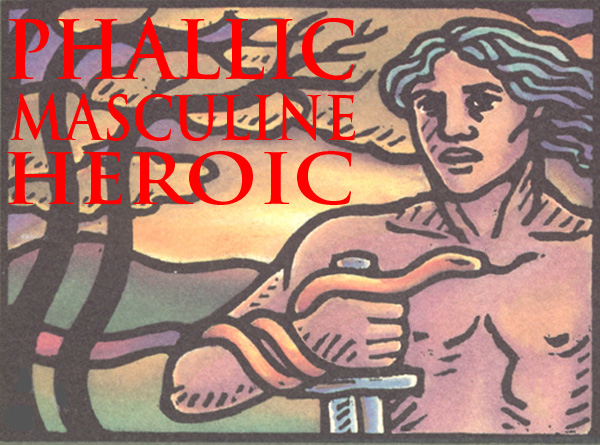



AND


Warriors Speak is presented by The Man2Man Alliance, an organization of men into Frot
To learn more about Frot, ck out What's Hot About Frot
Or visit our FAQs page.


© All material on this site Copyright 2001 - 2010 by Bill Weintraub. All rights reserved.


